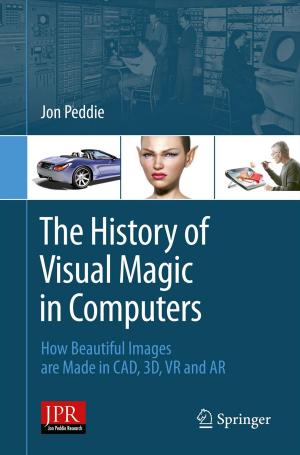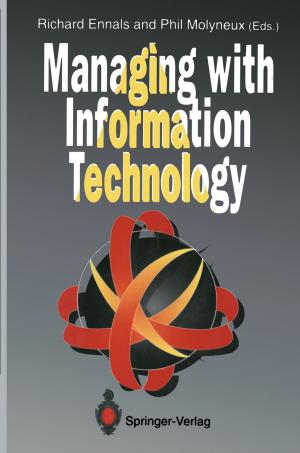Enhancing the Internet with the CONVERGENCE System
An Information-centric Network Coupled with a Standard Middleware
Nonfiction, Computers, Networking & Communications, Hardware, Science & Nature, Technology, Telecommunications| Author: | ISBN: | 9781447153733 | |
| Publisher: | Springer London | Publication: | November 27, 2013 |
| Imprint: | Springer | Language: | English |
| Author: | |
| ISBN: | 9781447153733 |
| Publisher: | Springer London |
| Publication: | November 27, 2013 |
| Imprint: | Springer |
| Language: | English |
Convergence proposes the enhancement of the Internet with a novel, content-centric, publish–subscribe service model based on the versatile digital item (VDI): a common container for all kinds of digital content, including digital representations of real-world resources. VDIs will serve the needs of the future Internet, providing a homogeneous method for handling structured information, incorporating security and privacy mechanisms. CONVERGENCE subsumes the following areas of research:
· definition of the VDI as a new fundamental unit of distribution and transaction;
· content-centric networking functionality to complement or replace IP-address-based routing;
· security and privacy protection mechanisms;
· open-source middleware, including a community dictionary service to enable rich semantic searches;
· applications, tested under real-life conditions.
This book shows how CONVERGENCE allows publishing, searching and subscribing to any content. Creators can publish their content by wrapping it and its descriptions into a VDI, setting rights for other users to access this content, monitor its use, and communicate with people using it; they may even update or revoke content previously published. Access to content is more efficient, as search engines exploit VDI metadata for indexing, and the network uses the content name to ensure users always access the copy closest to them. Every node in the network is a content cache; handover is easy; multicast is natural; peer-to-peer is built-in; time/space-decoupling is possible. Application developers can exploit CONVERGENCE’s middleware and network without having to resort to proprietary/ad hoc solutions for common/supporting functionality. Operators can use the network more efficiently, better controlling information transfer and related revenues flows. Network design, operation and management are simplified by integrating diverse functions and avoiding patches and stopgap solutions.
Whether as a text for graduate students working on the future of the Internet, or a resource for practitioners providing e-commerce or multimedia services, or scientists defining new technologies, CONVERGENCE will make a valuable contribution to the future shape of the Internet.
Convergence proposes the enhancement of the Internet with a novel, content-centric, publish–subscribe service model based on the versatile digital item (VDI): a common container for all kinds of digital content, including digital representations of real-world resources. VDIs will serve the needs of the future Internet, providing a homogeneous method for handling structured information, incorporating security and privacy mechanisms. CONVERGENCE subsumes the following areas of research:
· definition of the VDI as a new fundamental unit of distribution and transaction;
· content-centric networking functionality to complement or replace IP-address-based routing;
· security and privacy protection mechanisms;
· open-source middleware, including a community dictionary service to enable rich semantic searches;
· applications, tested under real-life conditions.
This book shows how CONVERGENCE allows publishing, searching and subscribing to any content. Creators can publish their content by wrapping it and its descriptions into a VDI, setting rights for other users to access this content, monitor its use, and communicate with people using it; they may even update or revoke content previously published. Access to content is more efficient, as search engines exploit VDI metadata for indexing, and the network uses the content name to ensure users always access the copy closest to them. Every node in the network is a content cache; handover is easy; multicast is natural; peer-to-peer is built-in; time/space-decoupling is possible. Application developers can exploit CONVERGENCE’s middleware and network without having to resort to proprietary/ad hoc solutions for common/supporting functionality. Operators can use the network more efficiently, better controlling information transfer and related revenues flows. Network design, operation and management are simplified by integrating diverse functions and avoiding patches and stopgap solutions.
Whether as a text for graduate students working on the future of the Internet, or a resource for practitioners providing e-commerce or multimedia services, or scientists defining new technologies, CONVERGENCE will make a valuable contribution to the future shape of the Internet.















